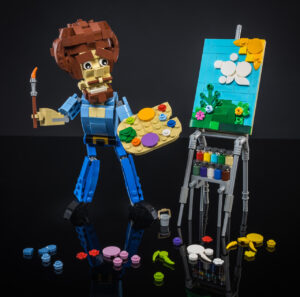Project Overview
Location: London, United Kingdom
Sector: Fashion, Advertising, Public Art
Tagged: Mural, Anniversary Campaign, Brand Takeover, Outdoor Advertising, Denim Culture
Street-Level Storytelling Meets Denim Legacy
In a city where billboards often shout and screens flash relentlessly, the decision to go analog—to use paint, brick, and patience—felt both subversive and timeless. For the entire month of May, one of the world’s most recognizable denim brands chose to mark its monumental anniversary not with a party or pop-up, but with something more enduring: a hand-painted mural takeover across four prime London locations.
From Hackney’s bustling junctions to the curated walls near Dray’s Walk in Spitalfields, the campaign did more than announce an anniversary—it reasserted the brand’s identity: craft, authenticity, and urban intimacy. In a world where marketing is increasingly algorithmic, this project reminded Londoners what it feels like to engage with a brand on the street, in real time, at human scale.
The Strategy: More Than Murals, It Was a Citywide Statement
The approach was tactile and local, a far cry from traditional luxury ad campaigns. These murals weren’t backdrops; they were living landmarks, each one acting as both celebration and story.
The four chosen locations—Hackney, Old Street, Truman Brewery, and Dray’s Walk—are significant not just for foot traffic, but for their cultural resonance. These sites represent the dynamic, creative and diverse soul of London, from its punk spirit to its artisanal rebirth. In painting on these walls, the brand wasn’t just occupying space—it was embedding itself into the visual memory of the city.
Each mural was tailored to its specific location, integrating the surrounding textures, architecture, and urban rhythms into the design. This was streetwear advertising with street respect.
Craft in Process: Painting the City by Hand
In an era where digital billboards can be activated with a swipe, hand-painting a mural is laborious, meditative, and profoundly human. Each mural took days—sometimes over a week—to complete. Brushes met bricks. Ladders stood tall against scaffolding. And through sun, drizzle, and London’s stubborn wind, the artists rendered the legacy of denim one stroke at a time.
The technique was intentional: hand-painting mirrors the heritage of denim, where quality is measured in stitches per inch, not speed. The artists, often London-based with deep ties to the muralist community, became part of the story themselves—locals painting a global brand into their city’s fabric.
Pedestrians didn’t just consume the work—they witnessed its becoming. That real-time performance added another layer of authenticity.
Mural 1: Hackney — Industrial Roots, Reimagined
The Hackney wall spoke to London’s raw energy. Set against a rough brick façade near the railway arches, the mural embraced a palette of indigo, ivory, and burnt sienna. It reimagined denim not as product, but as texture—woven into the story of a working-class borough turned creative hub.
Passersby stopped to take selfies, to post the progress, to watch artists literally “build” the campaign in real time. The mural celebrated the original spirit of the brand: functional, stylish, rooted in purpose.
Mural 2: Old Street — Graphic Nostalgia Meets Future Cool
In the tech-collide zone of Old Street, the mural embraced contrast: gritty versus glossy, old-school logo design meets postmodern minimalism. Neon-type fonts intercut with archival sketches of denim silhouettes, all arranged like a zine laid out across the wall.
Here, nostalgia was updated. Vintage imagery was reframed through a contemporary lens—a nod to the brand’s long-standing ability to stay relevant without chasing trends.
By week’s end, the mural had been tagged across fashion blogs and appeared in at least three local ad roundups. It wasn’t just brand exposure—it was cultural proof of presence.
Mural 3: Truman Brewery — Denim as Creative Canvas
Located inside one of East London’s most iconic creative spaces, this mural was the most conceptual. Rather than a straightforward campaign image, it resembled a collage: torn denim textures overlaid with hand-written quotes from artists, garment workers, and stylists about what denim means to them.
The message was clear: this isn’t just a fashion brand—it’s a storytelling platform.
The mural invited interactivity, with a QR code embedded in the paint directing viewers to short interviews and behind-the-scenes videos about the mural process and the anniversary campaign. For those who paused to scan, it was a multi-layered narrative experience.
Mural 4: Dray’s Walk — A Quiet Flex Near Spitalfields
The final mural, located at Dray’s Walk, just outside the commercial fray of Spitalfields Market, was deceptively understated. Cream-toned render on gray brick, with nothing but the brand’s original logo—unaltered, proud, and centered in a frame of hand-painted stitching lines.
It was a quiet flex. A reminder that even without slogans, taglines, or flashy call-to-actions, the brand’s identity could stand on its own stitching.
This wall became a moment of pause for locals and tourists alike—a minimalist space in a maximalist city. And perhaps the most poignant of the four, it embodied the essence of legacy: when you’ve done something right for long enough, you don’t need to shout about it.
The Urban Effect: Making Space Matter
Advertising often disrupts cities. These murals, by contrast, seemed to fold into London’s surfaces, creating resonance instead of noise. The brand didn’t just rent walls—it earned attention through design, context, and care.
By occupying public space with intentionality, the campaign flipped the usual script of visual intrusion. These murals weren’t just reminders of a brand’s longevity—they were gifts to the street. They gave back beauty, mood, and history to the neighborhoods they inhabited.
That’s the difference between urban effect—a campaign’s reach and footprint—and urban affect—what people actually feel when they encounter it.
Community Engagement: Conversations Beyond Commerce
Beyond aesthetics, the campaign also created real conversation. In Hackney, mural artists were joined by local youth groups who learned the basics of mural-making and street art ethics. In Truman Brewery, a weekend denim patching pop-up invited people to bring in old pieces for upcycling—an homage to the circular life of a well-loved pair of jeans.
These activations weren’t publicized heavily; they weren’t designed for virality. But they mattered. They turned a brand campaign into a community presence, blurring the line between message and meaning.
Brand Bequest: More Than a Milestone
This wasn’t just about an anniversary. It was a reaffirmation. The brand didn’t just say “We’ve been here for decades.” It said, “We still matter, and here’s why.” Through paint, participation, and presence, the campaign subtly—but powerfully—communicated relevance without desperation.
For a generation raised on fast fashion and fading logos, this campaign reminded them what longevity looks like when done right.
The City as Canvas, the Brand as Thread
In an advertising ecosystem saturated with noise, algorithms, and digital fatigue, this campaign demonstrated the enduring power of presence over push. By choosing walls instead of screens, artists instead of influencers, and craft over conversion rates, the denim brand turned a milestone into a moment of cultural resonance.
It didn’t just announce its anniversary. It asked the city to help celebrate it.
And London—gritty, stylish, unpredictable London—answered with a nod, a snapshot, and a mural-sized memory.
No comments yet.









